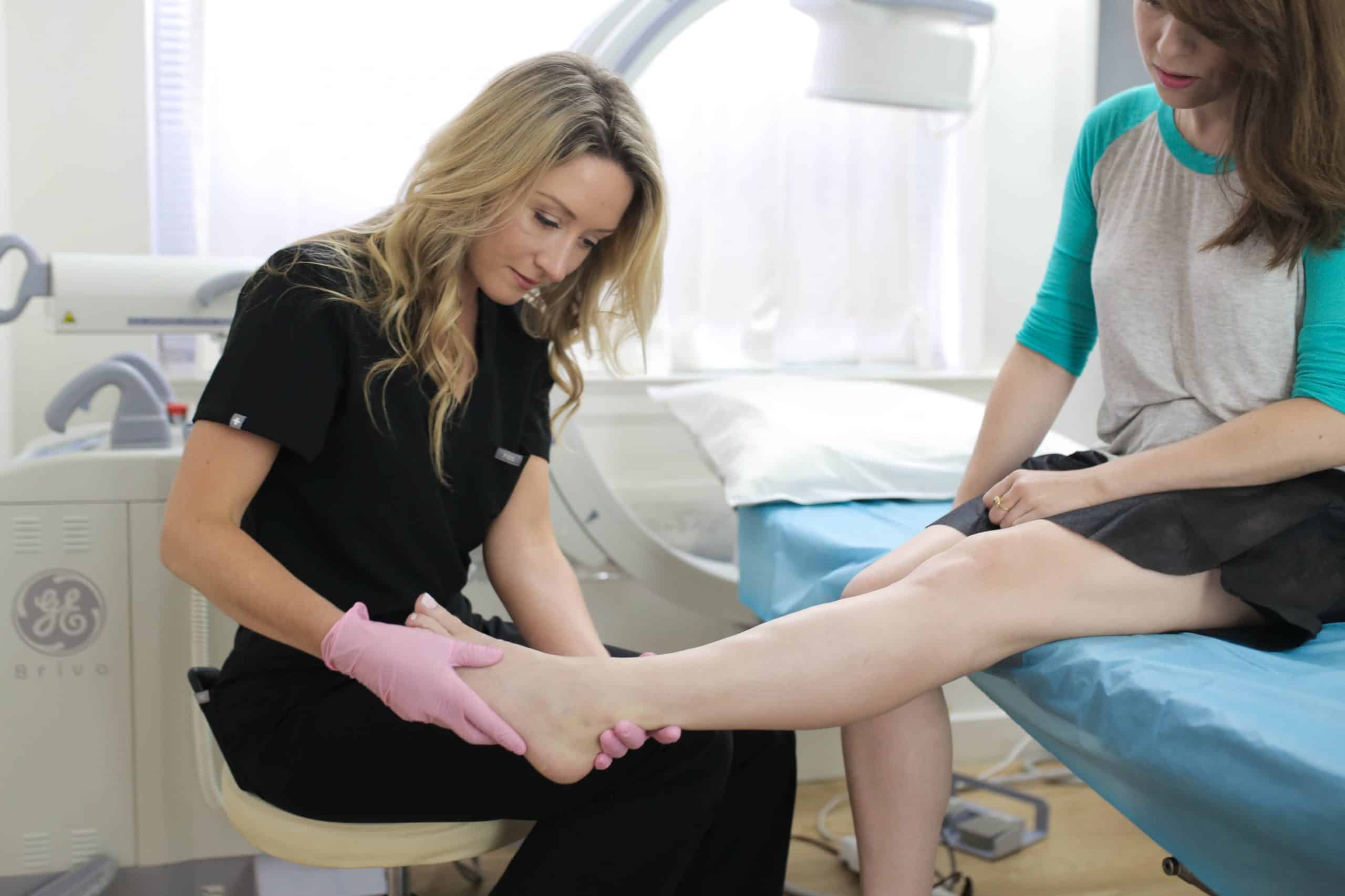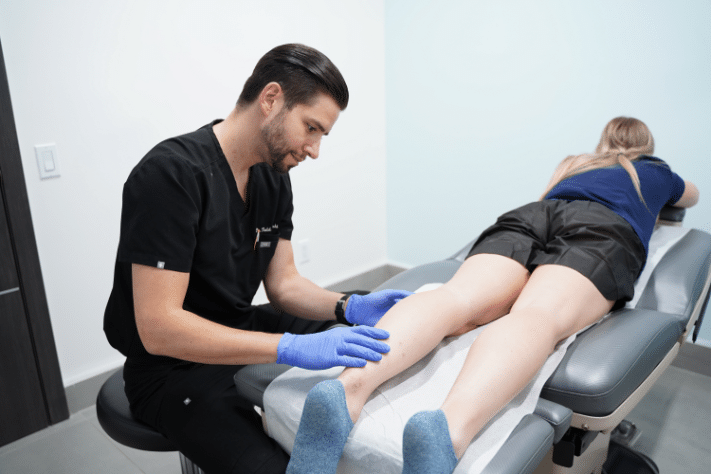When to See a Vascular Doctor: How Much Does Varicose Vein Treatment Cost?
Varicose veins are a common condition that affects millions of people worldwide. While some individuals may not experience significant symptoms, for others, these veins can cause pain, discomfort, and cosmetic concerns. If you’re unsure when to seek medical advice or wondering about the costs associated with treatment, this guide will help clarify both. Knowing when to see a vascular doctor and understanding the cost of varicose vein treatment is crucial in making informed decisions about your health.
What Is a Vascular Doctor?
A vascular doctor, also known as a vascular specialist or vascular surgeon, is a medical professional who focuses on diagnosing and treating diseases of the blood vessels, including arteries and veins. These specialists are trained to deal with conditions such as varicose veins, deep vein thrombosis (DVT), and peripheral artery disease (PAD).

Vascular doctors utilize a variety of treatment options, including minimally invasive procedures, to address issues related to poor circulation, vein malformations, and other vascular problems. If you are experiencing complications from varicose veins or other vascular conditions, seeking the advice of a vascular doctor is often the first step in finding effective treatment.
When Should You See a Vascular Doctor?
While some cases of varicose veins may not require immediate medical attention, there are certain signs and symptoms that suggest you should see a vascular doctor for evaluation and treatment.
Persistent Pain or Discomfort
If you experience persistent pain, aching, or a heavy feeling in your legs, it could indicate that your varicose veins are causing problems with blood flow. These symptoms often worsen after long periods of standing or sitting. A vascular doctor can assess the severity of the condition and recommend appropriate treatment options.
Swelling and Inflammation
Varicose veins can cause swelling and inflammation in the legs and feet. If you notice that your legs or ankles are regularly swollen, this could be a sign that your veins are not functioning properly. A vascular doctor can evaluate the underlying cause of the swelling and determine the best course of action.

Skin Changes or Ulcers
Varicose veins can lead to changes in the skin’s appearance, such as darkening, dryness, or the formation of ulcers or sores. If you notice any of these skin changes, it is essential to consult with a vascular doctor. Skin ulcers, in particular, can be a sign of poor circulation, which may require medical treatment to prevent further complications.
Bleeding
In some cases, varicose veins can become so enlarged and fragile that they rupture, leading to bleeding. If you experience any bleeding from a varicose vein, it’s essential to seek immediate medical care. A vascular doctor can stop the bleeding and discuss preventive measures to avoid recurrence.
Unexplained Fatigue or Leg Cramps
If you regularly experience unexplained fatigue, leg cramps, or restless leg syndrome, these could be related to underlying vascular issues. A vascular doctor can conduct tests to determine whether your veins are the cause and recommend treatment options to alleviate these symptoms.
How Much Does Varicose Vein Treatment Cost?
The cost of varicose vein treatment can vary widely depending on factors such as the type of treatment, the severity of the condition, your geographic location, and your insurance coverage. Below are some common treatment options and their associated costs.
Sclerotherapy
Sclerotherapy is a minimally invasive procedure that involves injecting a solution into the affected veins, causing them to collapse and fade over time. This treatment is typically used for smaller varicose veins and spider veins. The cost of sclerotherapy ranges from $300 to $500 per session. Multiple sessions may be required for optimal results, which can increase the total cost.
Endovenous Laser Therapy (EVLT)
Endovenous Laser Therapy (EVLT) is a popular treatment for larger varicose veins. It uses laser energy to heat and close off the affected vein. EVLT is typically performed in a doctor’s office under local anesthesia. The cost for EVLT typically ranges from $1,500 to $3,000 per leg, depending on the complexity of the procedure.
Radiofrequency Ablation (RFA)
Radiofrequency Ablation (RFA) is similar to EVLT, but it uses radiofrequency energy instead of laser energy to close off the vein. This procedure is also minimally invasive and performed in a doctor’s office. The cost of RFA typically ranges from $1,500 to $3,500 per leg, again depending on the severity of the varicose veins.
Vein Stripping
Vein stripping is a more invasive procedure that involves removing the affected vein through small incisions. This procedure is typically reserved for severe cases of varicose veins. The cost of vein stripping can range from $3,000 to $6,000 per leg. It’s generally more expensive due to the higher complexity and longer recovery time associated with the procedure.
Ambulatory Phlebectomy
Ambulatory phlebectomy involves the removal of varicose veins through tiny incisions. This treatment is typically used for larger varicose veins that cannot be treated with sclerotherapy. The cost of ambulatory phlebectomy ranges from $1,000 to $3,000, depending on the number of veins treated and the location.
Insurance Coverage
Many insurance companies cover varicose how much does varicose vein treatment cost if it is deemed medically necessary. However, coverage can vary based on your plan and the specific procedure. Before undergoing treatment, it’s essential to check with your insurance provider to understand your coverage options and out-of-pocket costs.
Conclusion: Is Varicose Vein Treatment Worth the Cost?
The decision to seek treatment for varicose veins depends on several factors, including the severity of your symptoms, the impact on your quality of life, and your overall health. If you’re experiencing pain, swelling, or other complications, consulting with a vascular doctor is an important step. While the cost of varicose vein treatment can be significant, many patients find that the benefits—such as reduced discomfort, improved appearance, and enhanced quality of life—make the treatment worthwhile. By understanding when to see a vascular doctor and the potential costs involved, you can make a more informed decision about your healthcare.
Comments
Post a Comment